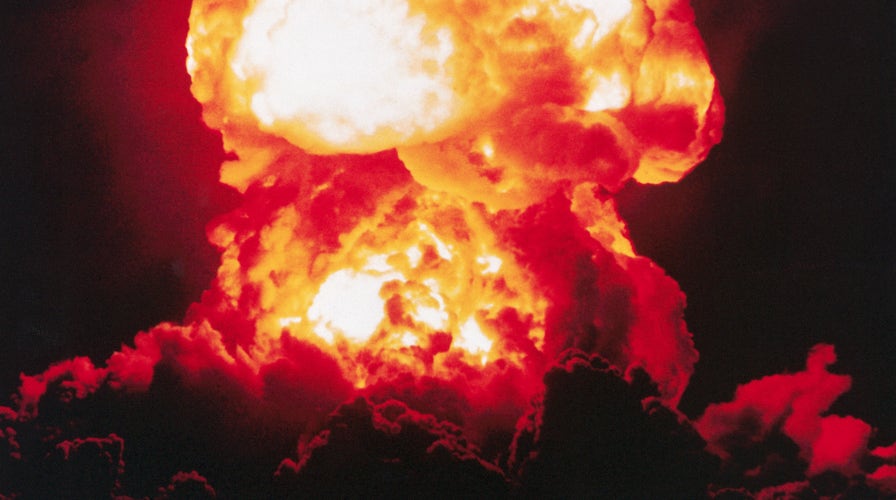Fox News Flash top headlines for Jan. 14
Fox News Flash top headlines for Jan. 14 are here. Check out what's clicking on Foxnews.com
A full-scale nuclear war would likely trigger a worldwide period of cold and darkness that could spark a famine.
However, David Denkenberger, a mechanical engineer at the University of Alaska who runs the nonprofit Alliance to Feed the Earth in Disasters (ALLFED), told Business Insider that it would still be possible to save humanity with some type of sustainable "disaster diet."
Experts have warned that a nuclear war between India and Pakistan would unleash a global catastrophe that would result in 50 to 125 million direct fatalaties and cause a sharp drop in the global temperature -- devastating the world's food supply.
Researchers found "that if Pakistan attacks urban targets in 2025 with 150-kiloton nuclear weapons and if India responds with 100-kiloton nuclear weapons, smoke from burning cities would release 16 to 36 teragrams of black carbon into the atmosphere, blocking out sunlight and cooling the global surface by 2 to 5°C (3.6 to 9°F)," according to a news story on the website of the American Association for the Advancement of Science.
TOP-SECRET UFO FILES COULD 'GRAVELY DAMAGE' AMERICAN NATIONAL SECURITY, NAVY SAYS

The detonation of the atomic bomb nicknamed "Smokey," as part of Operation PLUMBBOB in the Nevada desert. 1957. (Photo by © CORBIS/Corbis via Getty Images)
According to Denkenberger, who published his work in the International Journal of Disaster Risk Reduction, there are ways to sustain humanity even amid a nuclear winter. A 2008 paper describing how fungi could survive a thermonuclear holocaust and a subsequent nuclear winter drew his interest.
"The conclusion of the paper was, maybe when humans go extinct, the world will be ruled by mushrooms again," Denkenberger said in an interview with Business Insider. "I said, 'Wait a minute. Why don't we eat the mushrooms and not go extinct?'"
Mushrooms could feed on the milions of dead trees, which could potentially feed everyone still alive for about three years, according to Denkenberger's estimates in his study.
In addition to mushrooms, which don't need much light to grow, seaweed is another potential food source.
"Seaweed is a really good food source in a scenario like this because it can tolerate a low light levels," Denkenberger explained to the business publication. "It's also very fast-growing. In a nuclear winter, the land will cool down faster than the oceans, so the oceans will remain a little bit warmer. Seaweed can handle relatively low temperatures."
HUMANITY'S FOOTPRINT IS SQUASHING THE WORLD'S WILDLIFE
The mechanical engineer estimates the world would need about 1.6 billion tons of dry food per year to feed everyone, but he said humans could possibly grow that much seaweed in three to six months.
"There's definitely historical precedent," he told Business Insider, noting previous volcanic winters that have taken place and triggered cooler temperatures worldwide. "But it has been a challenge getting people to think about these bigger disasters."
Fox News' James Rogers contributed to this report.






















